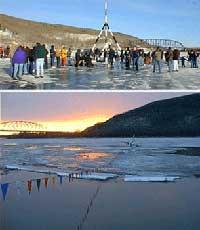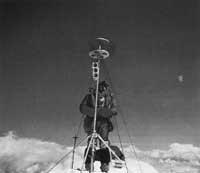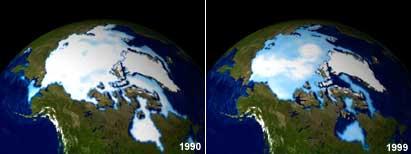Ice waiting for fusion
2001/10/29 Araolaza, Oier - Elhuyar Zientziaren Komunikazioa
A curious habit of some Alaskan inhabitants has served scientists to complete climate change data. The inhabitants of Nenana are bettors and each year they organize a special bet in spring. In the center of an icy river that passes near the village a large wooden tripod is installed. They try to announce when the ice melts and the tripod will sink and bet by putting dates to guess the day of thaw. They have fulfilled almost a century repeating the same bet every year, so they have unconsciously made an important accumulation of data on the thaw of the river. Data indicate that the river melts five days before its time.

In 1917, a group of railway workers took first place. They wanted to announce when the ice of the Tanana River, located in central Alaska, was going to melt, and $800 was played to get the ice back into the day and make up hour and minute. The position became an annual custom in the nearby town of Nenana, and over the years the echo of the bet has spread throughout the state. Today, from all corners of Alaska he arrives at the Tanana River to play the betting competition "The Nenana Ice Classic". This is a big party in which the prize is $300,000.
Thanks to this commitment, valuable data on climate change have been collected since 1917. Gamblers are often demanding when playing money, so the organization has paid special attention to the conditions being the same every year and, among other things, have taken steps to have the tripod installed exactly in the same place. Researchers at Stanford University have collected data from the last 84 years in which they have bet and have found that ice is currently broken 5.5 days before 1917. It is observed that this data coincides with the trend of tempering regional temperature.

Gai honi buruzko eduki gehiago
Elhuyarrek garatutako teknologia






